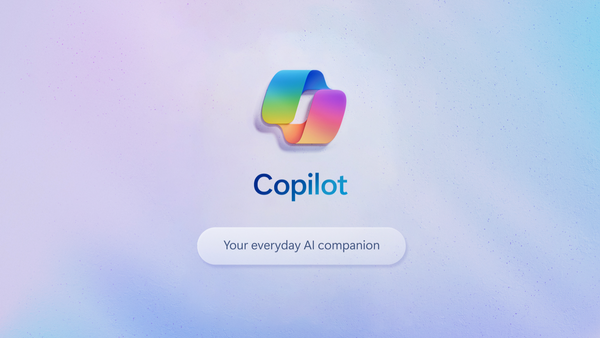The rapid advancement of AI technologies like machine learning and natural language processing has led to the emergence of sophisticated new tools aimed at boosting business productivity. Leading technology providers including Microsoft, Google, OpenAI, Anthropic, and others now offer paid solutions that leverage large language models to help employees write faster, brainstorm creative ideas more easily, improve customer communications, and even generate code.
Overview of Paid AI Tools
Some of the most buzzed-about new offerings include:
- Microsoft 365 Copilot - An AI-powered writing assistant built into Word, Outlook, and PowerPoint to help craft content.
- Google Duet AI - A similar writing and brainstorming productivity tool for Google Workspace users.
- ChatGPT Team/Enterprise - Versions of the viral ChatGPT interface fine-tuned on sensitive data to allow customized business use cases.
- Anthropic Claude - Trusted for integrity, Anthropic's Claude chatbot focuses on providing helpful, harmless, and honest guidance.
These tools promise to act as AI co-pilots for employees, suggesting content as they type based on the context of what they are writing. The solutions utilize large language models under the hood to enable generative abilities.
The Investment Dilemma
As interest grows, an important question emerges - are these paid AI tools actually worth the investment required? Solutions like Microsoft Copilot and Google Duet AI cost $20-$40 per user monthly. ChatGPT Enterprise pricing will likely be in the multiple hundreds of dollars per month range.
For budget-conscious businesses, it's unclear if the monthly per-user pricing is justified. But providers pitch up to 20% employee efficiency gains through AI augmentation.
Determining the true return on investment requires a deeper look at the potential productivity benefits relative to the costs. We'll explore this analysis throughout the piece.
The Potential Value of Paid AI Tools
Unlocking 10-20%+ Efficiency Gains
While monthly per-user pricing may seem high for new AI capabilities, the productivity benefits tell a compelling story. Leading providers suggest that properly implemented tools can increase employee efficiency by:
- 10% - A conservative starting point for workers augmented by AI writing assistance and brainstorming
- 15-20% - More realistic efficiency lift based on typical use cases and integration efforts
- 20%+ - Achievable gains for optimal AI adoption across multiple roles and workflows
These productivity lifts quickly justify AI software costs if distributed across employees with high salaries or billing rates.
Example ROI for a $775K Employee
Consider a full-time employee earning $775,000 annually in base salary. Assuming a standard 2,080 work hour year, their effective hourly rate is approximately $373.
If AI tools boosted that employee's efficiency by just 10%:
- They would get the same amount of work done in 1,872 hours instead of 2,080 hours
- Saving 208 hours per year, equal to $77,584 in value
- Far outweighing the ~$500 yearly cost of AI software access
The ROI math is overwhelmingly positive, even with conservative efficiency assumptions. And executives with $1M+ salaries see that ROI multiply further.
Productivity Impacts Across Roles
These AI assistants promise productivity gains across crucial workflows:
- Writing & Communication - Faster email, documentation, memo, pitch and proposal drafting
- Creative & Planning - Enhanced ideation and brainstorming capabilities
- Software Development - Suggestions of code snippets and logic to accelerate building
- Customer Service - Optimized support communication and issue resolution
The key is applying AI augmentation to maximize impact for the highest value roles. But accounting for some workflow optimization, even entry-level employees can generate ROI.
Careful change management and training help ensure that productivity analytics match the theoretic potential. When executed well, AI tools drive immense value relative to their cost.
Implementing Paid AI Tools Effectively
Don't Overpurchase Licenses Upfront
The enthusiasm for productivity gains leads many companies to purchase paid AI tool licenses for entire teams or departments all at once. But this urge should be resisted.
While the math may seem convincing to arm a 50-person team with licenses costing $30 per user monthly, a more deliberate rollout approach is advisable.
There are careful change management steps that come first, before unlocking the full potential of paid tools across a workforce.
Establish Strong AI Policies First
The most crucial precursor to expanded deployments is developing thoughtful AI governance policies to guide employee usage.
At a minimum, policies should cover:
- Permitted usage contexts (internal/external)
- Disclosing auto-generated content
- Protecting sensitive data
- Securing API access
Ideally, policies also provide frameworks for upholding ethics, reducing bias, and maintaining responsible design principles.
While policy development may delay wider licensing purchases, it ensures responsible usage at scale.
Educate Employees on Capabilities
Licensing also shouldn't broadly outpace the training resources available to employees. There is often a knowledge gap around the expansive capabilities of large language model-based tools.
Educational programs that demystify how these AI assistants work help workers capitalize on the real possibilities. Training should clarify available functionality when to leverage suggestions, what inputs work best, and how to customize the tools.
Rolling these programs out alongside access expansion keeps utilization high.
Centralize Program Ownership
Managing the change management complexity requires centralized program ownership. Appointing an executive or team to oversee policies, training, and metrics provides the focus needed to drive adoption.
This emerging practice is being called AI Operations (AIOPS) - encompassing asset management, data pipelines, monitoring, and tool governance.
Having centralized AIOPS ultimately smooths the path to maximizing the value of paid tools at scale.
Proving Value and Expanding Over Time
Start With Targeted Pilot Programs
Rather than company-wide licensing from the outset, start with controlled pilot programs across targeted teams. Work with enthusiastic early adopters from writing teams, designer groups, or developer squads.
This focal approach allows policies, training practices, and metrics tracking to be refined within a smaller scope first.
Measure Productivity and Usage
Rigorously instrument pilot programs to quantify utilization, efficiency lifts, and impact on output.
Key metrics to track include:
- User activity - frequency, depth, and variability of usage behaviors
- Text/content generation volume & rate increases
- Time savings for writing, research, analysis, etc
- Iteration improvements - reduced revisions and editing cycles
- Downstream efficiencies - less meetings, email, calls from clearer async communication
Report ROI to Leadership
Armed with tangible productivity analytics from controlled pilots, the ROI justification becomes concrete. This data can convince hesitant executives to endorse wider licensing and usage.
A six figure productivity lift for a high paid pilot team quickly offsets enterprise software costs. The case for AI impact crystallizes through careful measurement.
Scale Efforts With AIOPS
As usage expands, having concentrated program ownership via an AIOPS team smooths scale up. An established governing body to manage policies, model risks, ensure responsible AI practices, support users, interface with vendors, and continuously improve value are critical at this inflection point.
Emerging career paths in AI and ML operations satisfy this crucial need that enables sustainable, ethical AI integration.
Key Takeaways
Paid Tools Need Thoughtful Implementation
While the promise of 20%+ efficiency gains and nearly-instant payback periods is alluring, achieving this potential requires much more than merely purchasing software licenses.
Careful change management, governance, training, and analytics practices dictate whether the touted productivity improvements become reality or stay theoretical.
Jumping into AI augmentation head first without policies, education programs, pilot measurements, and continuous oversight leads to suboptimal utilization and discourages expansion.
The keys to success involve sustaining responsible usage habits that maximize constructive business impacts over the long-term. Rushed or improper implementations carry significant risk.
Exploring No-Cost Tool Options
While paid solutions like Copilot and Duet AI show immense productivity promise, organizations can kickstart experimentation using entirely free conversational AI interfaces as well.
Popular no-cost options like ChatGPT, Anthropic's Claude, and Quora's Poe provide basic access to the same style of large language model capabilities that power leading solutions.
ChatGPT
The viral chatbot offers a playground for employees to become familiar with generative AI, trying prompts focused on writing assistance, content ideation, customer support, and task/process automation.
Drawbacks center around consistency, accuracy limitations, and no enterprise-level support. But superb for low-risk trials.
Anthropic's Claude
Trusted for safer integrity as the first constitutional chatbot focused on avoiding harmful, biased, or unreliable guidance. Can support pilots requiring ethics-centric generation.
POE by Quora
Specialized in concise Q&A interactions perfect for quickly testing workforce use cases needing reliable, factual responses or brainstorming. Upsides in speed and accuracy.
Google Bard
Google's new experimental conversational AI has similarities to ChatGPT in open-domain question answering and dialog abilities. Well-suited for early stage testing by power search users.
Starting pilots with free tools allows risk-free exploration into applications while postponing paid tool procurement until ideal functionality is apparent. And blending no-cost options with leading suites can augment capabilities further.
But...The Rewards Can Be Well Worth It
When paired with diligent coordination to enable human+AI symbiosis, paid assisting technologies like Copilot demonstrate immense capability to enhance workplace output.
The world has never seen a software category with as much influence over knowledge economy roles that dominates ROI metrics so clearly and positively.
If change management is executed deliberately, paid AI signifies the next major evolution in digital business transformation. One where humans get to focus on creative, analytical and strategic thinking rather than rote information labour.
So in closing, generative AI merits all the enthusiasm building around it - but only with careful nurturing to structure win-win human/machine partnerships. The fruits of this balancing act will reshape entire industries.
Top Paid Tools
What are the top paid AI tools on the market?
The most widely adopted options include:
- Microsoft 365 Copilot
- Google Workspace Duet AI
- Anthropic Claude
New solutions are emerging from startups as well like Quill, Boomwriter, and ChiefAI. Legacy software players such as SAP, Salesforce, Oracle also have AI offerings.
How much do paid AI tools cost per user?
Pricing today ranges between:
- $10 - $30 per user monthly for entry-level writing capabilities
- $30 - $50 per user monthly for intermediate functionality
- $100+ per user monthly for advanced generation across multiple workflows
Enterprise-wide licensing and custom training packages bring additional costs. But increased productivity can create substantial business value relative to these investments.
What employee productivity lifts are realistic to expect?
Typical productivity lifts span:
- 5-10% for early stage experimentation
- 10-20% when used for select high impact roles
- 15-30% with broad adoption and integration
Leaders suggest over 50% is achievable for optimal business integration in the long run.
Who should lead AI tool implementation?
Responsibilities typically fall under emerging AI Operations (AIOPS) roles and teams that manage policies, training, monitoring, tool integration, and analytics.
Chief AI Officers or Heads of AI Disruption are also options for centralized leadership. Cross-discipline working groups also effectively govern the process.
How long should an AI pilot program run?
Most pilots span 2-3 months for initial testing and metrics analysis.
Pilots aimed at optimizing workflows and leading to expansion may run for 6 months to to observe longer-term impacts before further scale up.
The goal is gathering enough real-world utilization data to accurately forecast results at scale.
Conclusion
Zeroing In on Real Value
The new frontier of paid AI tools for business productivity like Copilot and Duet AI promise truly astounding ROI potential on paper - in excess of 20x by some accounts.
But, without clear governance, learning programs, centralized leadership, controlled testing, and other change management investments, that remarkable potential fails to materialize.
Companies with stars in their eyes for AI tools need grounding in the realities of realization before overcommitting financially and strategically. A core tenet to note remains: hastily deployed tech rarely yields hoped for gains.
Piloting Paid AI Promotes Progress
Stepping back, taking stock in core needs, and piloting solution candidates made for tactical aims bears great wisdom. Selected team experimentation uncovers the most constructive AI applications for now while building know-how for phased integration.
Metric-driven trials demonstrate credible business cases. With a watchful eye for responsible usage, positive impacts should then earn tool expansion in due course, not the reverse.
Change Management Unlocks True Paid AI Power
Thus by reading between the lines of machine learning advance hype, we find proven methods for harnessing productivity acceleration - that also uphold ethics and thoughtfulness. Namely, incrementally nurturing human+AI synthesis through patient change management strategies centered upon usage policies, training programs, oversight teams, and gradual adoption.
This diligent development unlocks genuine multiplicative outcomes, whereby people and AI harmoniously outperform either alone. The promise is profound, but realization takes deliberation. Only via prudent nurturing will remarkable productivity transformation bloom responsibly.





